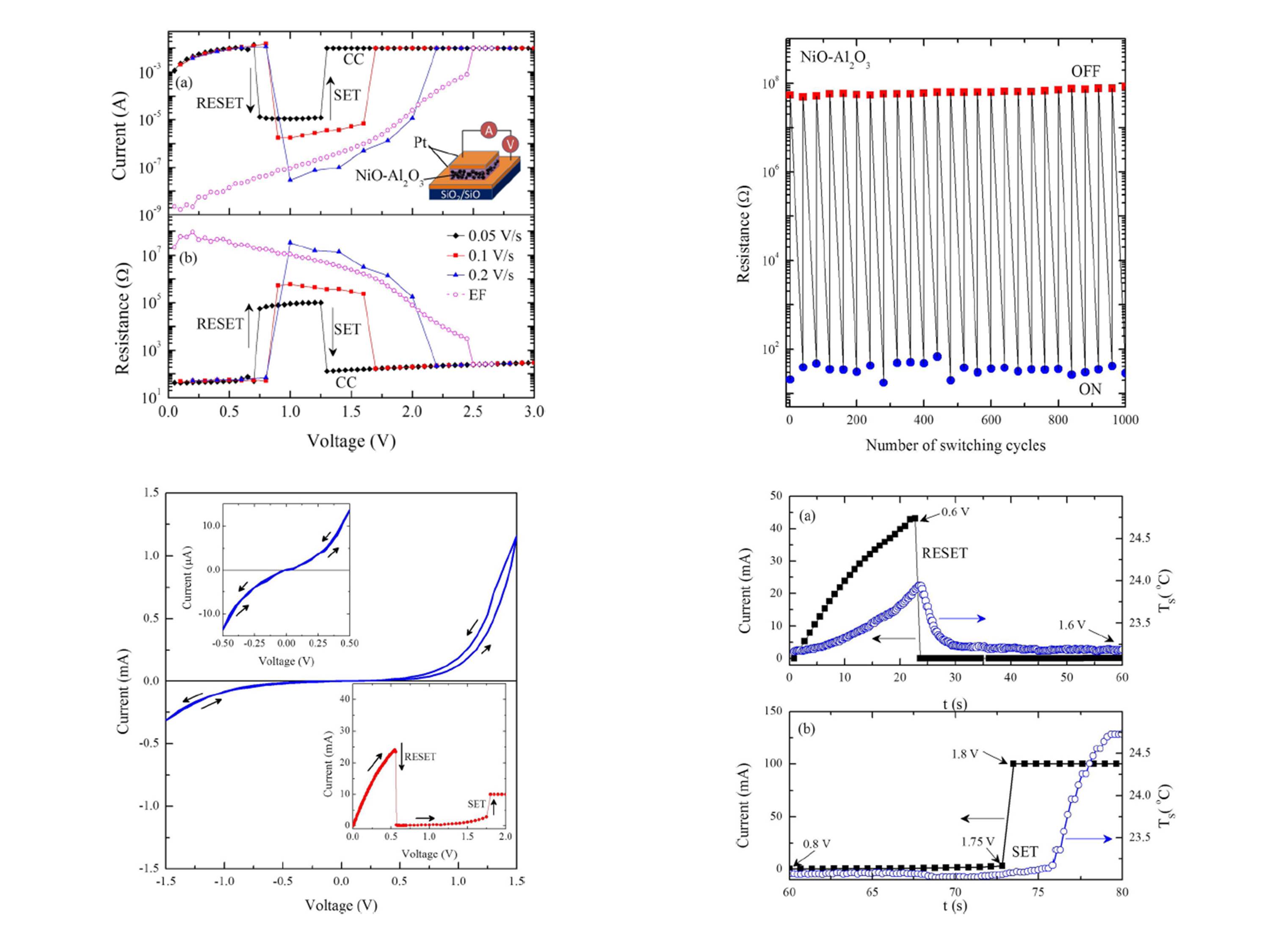Resistive switching
 Resistance switching (RS), which refers to the alternation of conductance in solids triggered by an external electrical field, is a very fundamental physical phenomena observed since the 1960s. Also termed as electroresistance, it is a hot topic of research over the past decade due to its enormous potential as a ultra-high density and high speed nonvolatile memory. Resistance switching (RS), which refers to the alternation of conductance in solids triggered by an external electrical field, is a very fundamental physical phenomena observed since the 1960s. Also termed as electroresistance, it is a hot topic of research over the past decade due to its enormous potential as a ultra-high density and high speed nonvolatile memory.
The prime research focus on RS involves metal-oxide-metal capacitor-like structures (CS) based on various transition metal oxides (TMO). Depending on the current-voltage characteristics of the M-TMO-M CS, RS behavior is classified into two types: (a) unipolar switching and (b) bipolar switching. In unipolar RS, the CS is driven from ON to OFF state at some threshold voltage amplitude and again switched back to the ON state at higher threshold voltage amplitude of same polarity. On the other hand, ON and OFF processes are triggered by voltage amplitudes of different polarity in bipolar resistive switching. For instance, if SET switching occurs at a positive voltage polarity, RESET switching is achieved at a negative voltage polarity. Typically, an initial step known as electroformation is required to precondition the as-prepared devices to exhibit RS. This prerequisite involves the application of a sufficient voltage under proper current limit so that the device does not experience a dielectric breakdown.
- We demonstrate co-sputtering as a new route of interface engineering to enhance resistive switching characteristics. A large enhancement in the ON-OFF ratio has been obtained in capacitor-like structures based on co-sputtered oxides.
- We investigate electroresistance in the OFF state in detail. Interestingly, current-voltage (I-V) characteristics in the OFF state exhibit an intriguing rectification behavior and hysteresis, and the sign of rectification shows a crossover from positive to negative with an increased hysteresis.
- Despite of numerous efforts, the proper understanding of resistive switching mechanism is still lacking, which impedes it practical implementation. Our experimental results in the OFF state indicates the interplay of Schottky barrier modification due to the trapped charge carriers at the metal-oxide interface and percolation effects of conducting nanofilaments.
- We study the change in the surface temperature of the oxide layer to understand the role of thermochemical reactions initiated by Joule heating during SET-RESET process.

Further readings:
- A. Rebello, and A. O. Adeyeye, J. Appl. Phys, 119,084506 (2016).
- A. Sawa, Mater. Today 11, 28 (2008).
- R. Waser, and M. Aono, Nat. Mater. 6, 833 (2007).
|

